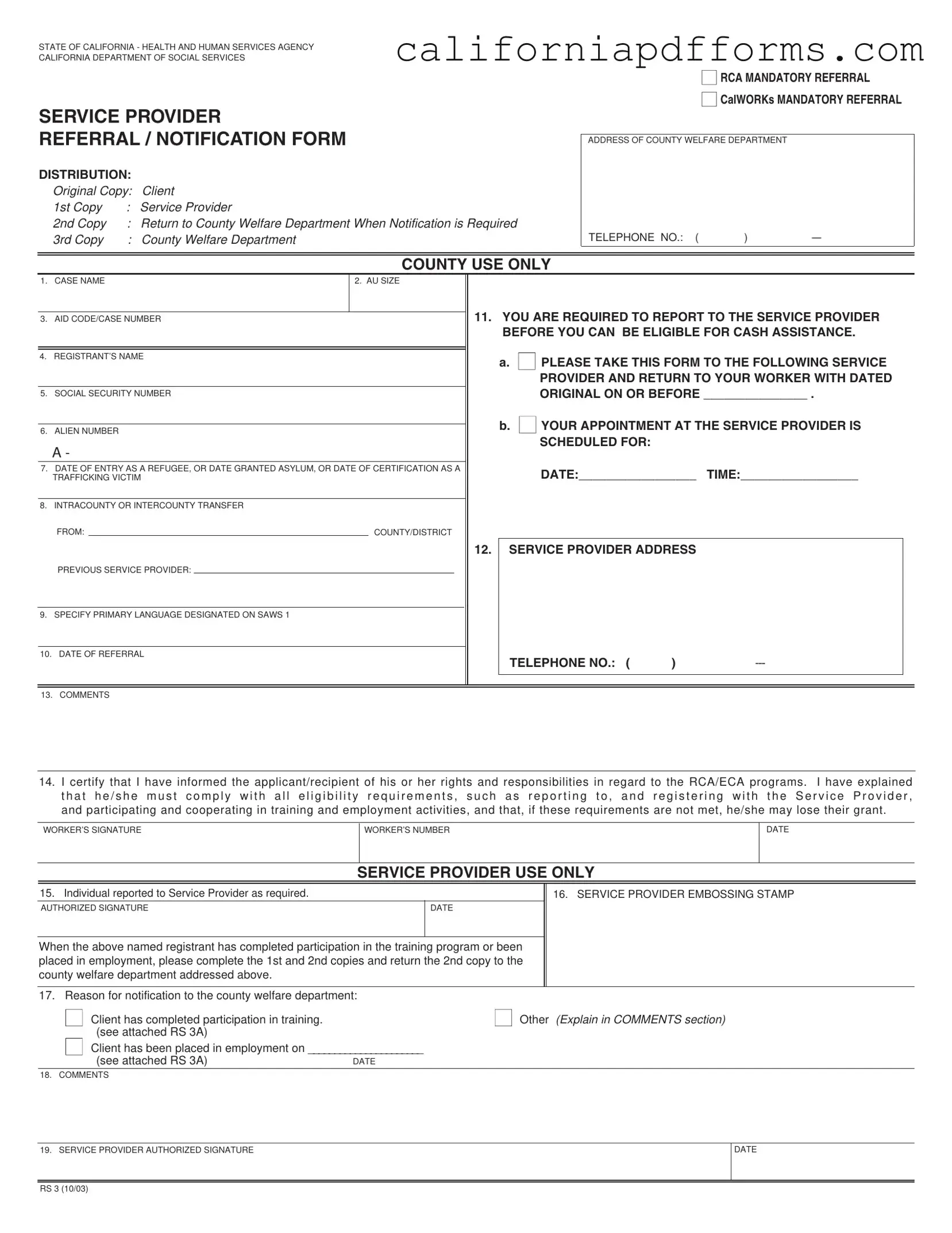Download California Rs 3 Form
The California Rs 3 form is a notification tool utilized by the California Department of Social Services to facilitate mandatory referrals for cash assistance programs, including RCA and CalWORKs. This form ensures that applicants comply with eligibility requirements by reporting to designated service providers. Completing the Rs 3 form is essential for maintaining access to necessary financial support.
To fill out the form, please click the button below.
Open Your Form Online
